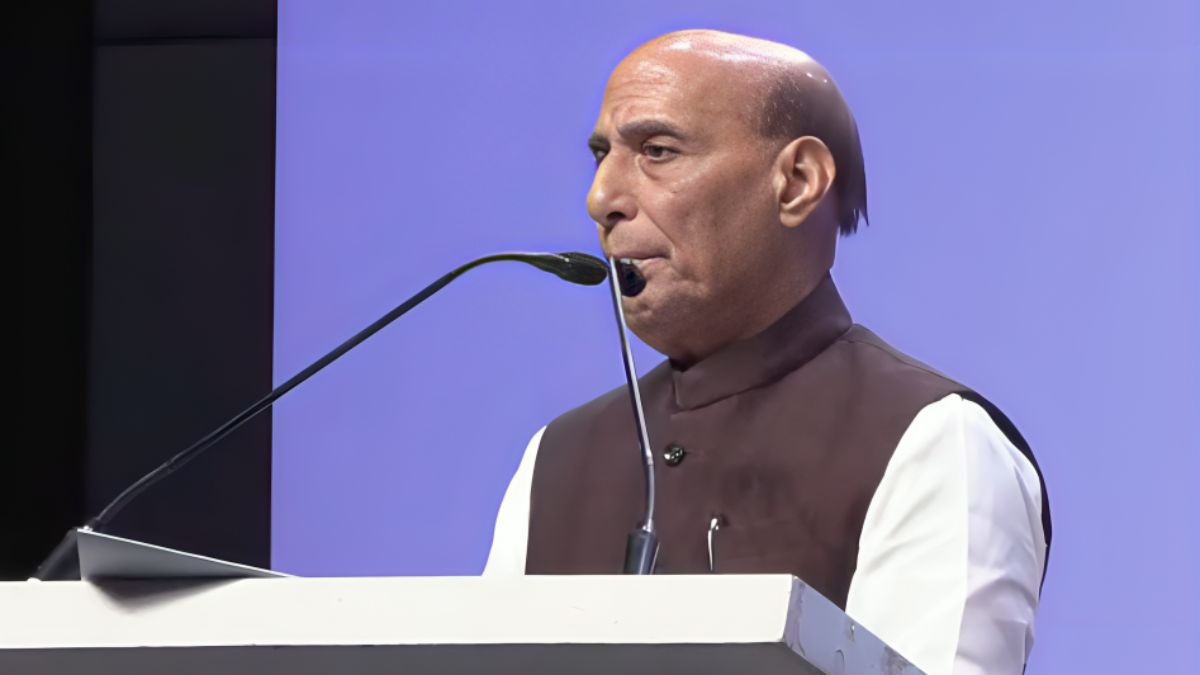Defence Minister Rajnath Singh on Friday (October 24) said the Indian Army has been central to ensuring peace and development in Jammu and Kashmir (J&K) since the abrogation of Article 370 in 2019. Speaking at the ongoing Army Commanders’ Conference in Jaisalmer, Singh described the constitutional change as a “historic move” that has reshaped the region’s outlook.
“People are confident about their future. Most importantly, the decision-making system is now in the hands of the local people. The Indian Army has played a crucial role in this endeavour,” he said. Singh added that the “streets of Jammu and Kashmir are filled with hope, not unrest,” attributing the sense of normalcy to the security environment maintained by the Army.
The minister also referred to the de-escalation process with China in eastern Ladakh, citing it as proof of India’s “balanced and firm” approach to border management. He said that while dialogue remained a priority, military preparedness would “remain intact.” Singh praised the Armed Forces’ precision during Operation Sindoor—an anti-terror campaign that, he said, had compelled Pakistan “to think twice before any provocation.”
How does the Army create conditions for peace?
Behind Singh’s remarks lies a transformation in the Army’s role in Kashmir—from a force solely focused on conflict to one deeply enmeshed in stabilisation and development. Since the reaffirmation of the 2003 ceasefire in 2021, infiltration attempts have declined sharply along the Line of Control. The Army’s infantry, through constant patrols and surveillance, has reduced militant movement across the frontier and allowed border villages to return to normal life.
Within the Valley, the Army’s Rashtriya Rifles have worked alongside the Jammu and Kashmir Police to dismantle insurgent networks. Their operations are complemented by civic initiatives under Operation Sadbhavana, which funds schools, medical camps, and skill-training programmes. More than 40 Army Goodwill Schools now educate over 15,000 children each year, often in places where state infrastructure was absent. The Army also runs free healthcare camps and mobile clinics that reach far-flung hamlets across Kupwara, Tangdhar, and Poonch, filling critical gaps in public services.
In Kashmir and Ladakh, security and development are intertwined. Roads, tunnels and bridges—such as the Bandipora–Gurez road, the Mohura–Baaz link in Uri and the ongoing Zojila Tunnel—have been constructed in areas once plagued by violence. Many of these projects, executed by Border Roads Organisation, serve both strategic and civilian purposes: improving troop mobility while connecting isolated villages to markets, hospitals and schools.
After decades of instability, these arteries of connectivity have become symbols of resilience. Villages that once saw curfews now host classrooms; farmers transport produce to towns within hours; and tourism has begun to revive. The Indian Army’s engineers and soldiers, in building and defending this network, have effectively turned security into the scaffolding of development.
